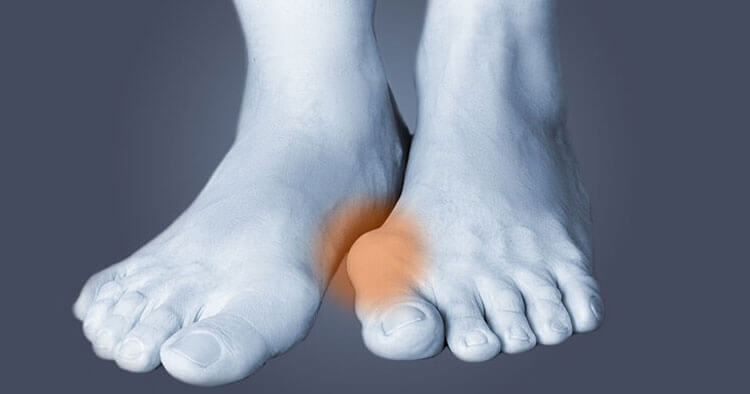Back and Joint Pain, Surgical Procedures and Protocols
Treating A Bunion
Not Every Bunion Is Symptomatic
Not all bunions are symptomatic. Even though visually they may seem quite alarming, bunions don’t necessarily require treatment. Unless locally symptomatic, or considered to be a contributing factor driving other lower limb ailments, treatment isn’t always employed. A bunion however, is a permanent deformity of the big toe which can be improved, or have any further deterioration slowed, or halted with appropriate treatment and can be corrected via surgery. Left untreated, some of the possible complications of having a bunion may include the development of:
- Arthritis in the affected big toe, or other areas of the foot or ankle due to biomechanical changes resulting from the altered big toe function due to the presence of the bunion and impaired big toe function.
- Hammertoes, will commonly (but not exclusively) occur at the second toe when a bunion is present. As a result of the second toe being pushed up, as the big toe drifts across pushing into the other smaller toes of the foot.
- Metatarsalgia, a painful condition that often accompanies bunions and hammer toes, typically causing pain felt on the ball of the foot.
Bunion Prevention
Although as previously stated, bunions often don’t require medical treatment. If you notice you have bunions, or are experiencing pain or skin changes as a result of your bunion, then seeing a podiatrist is a great starting point. Wearing appropriate footwear is an important step in managing bunions. Often good footwear is all that is needed to alleviate the any pain experienced. Choosing the right shoes, can help reduce stress on any minor bunion deformity and may reduce the likelihood of the bunion progressing over time.
Picking the right shoe can start by choosing shoes that have a wide toe box, importantly avoiding pointy toed shoes, or likewise any shoe that the forefoot doesn’t easily fit within the width of the shoe. Select shoes with adequate cushioning, arch support and shoes with uppers made of soft materials that conform to the shape of the foot without squeezing, pressing or rubbing on any part of the foot. The right shoe will help with both biomechanics as well as reducing the likelihood of developing any associated skin changes, which are common with bunions.
- Orthotics are a mainstay of bunion treatment. Podiatrists can prescribe customised insoles which can help control biomechanical and loading factors contributing to bunions and help reduce stress on existing bunions.
- Simple off the counter or heat moldable insoles may be sufficient, however in many circumstances customised podiatry insoles are the best bet.
- Appropriate padding, cushioning and splints are sometimes used in addition, or in isolation to orthotics to offload the area. These approaches in some circumstances may help cushion the joint, reduce pain and splint the toes straight. Night splits holding the great toe straight are relatively cheap and commonly used by people with mixed reports. They are typically safe to use however whether of not they have a significant impact on the course of the condition is debatable.
Most Bunions Can Be Treated Without Surgery
In sever cases surgery may be considered where the aim of surgery is to bring the big toe back into correct alignment and manage pain. Rehabilitation following surgery can be quite prolonged, often requiring keeping off your foot for some weeks post-operatively comfortably taking upwards of 6 months for a complete recovery. Obviously, any post operative non-weight bearing time frames, management and overall time frames for recovery are dependent on individual circumstances of the surgery and surgeons recommendations.
Disclaimer: Sydney Physio Clinic provides this information as an educational service and is not intended to serve as medical advice. Anyone seeking specific advice or assistance on Treating A Bunion should consult his or her physiotherapist, podiatrist or general practitioner.


